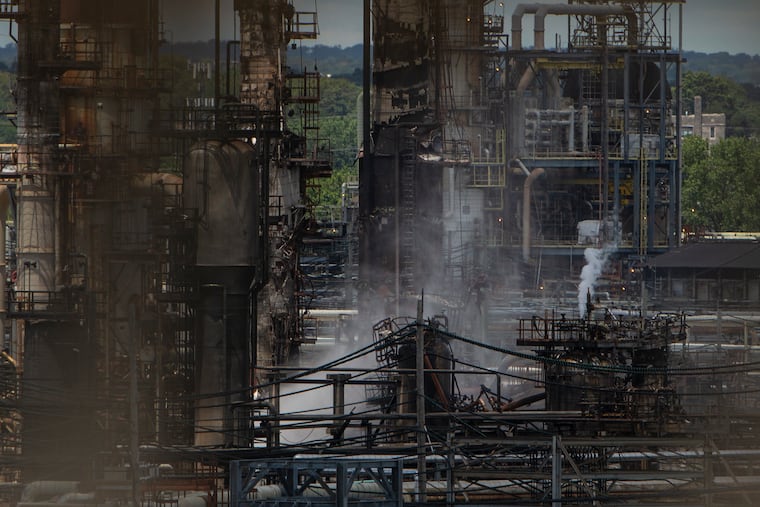Philadelphia oil refinery fire: What we know as investigations begin
The fire was extinguished over the weekend. Now the work begins to determine the cause of the explosions that have impacted the largest oil refinery on the East Coast.

With the fire finally out, investigators are set to begin their work into determining what caused the explosions and massive blaze at the Philadelphia Energy Solutions oil refinery Friday. Here’s the latest on what we know.
The blast: An explosion followed by two others rocked the PES refinery next to the Platt Bridge in South Philadelphia about 4 a.m. Friday, triggering a massive fire. The explosion’s fireball was so intense and hot it was captured by a weather satellite in space. Five refinery workers suffered minor injuries.
Neighborhood impact: Residents living near the refinery — the largest on the East Coast — were advised to shelter in place, but the advisory was lifted after a few hours when officials reported that tests for 61 chemical compounds determined the air was was safe.
The chemicals: PES said three explosions “impacted” a unit that produces alkylate, used to boost gasoline octane. The refinery complex has two alkylation units, and the unit that was involved in the conflagration uses hydrogen fluoride — a deadly chemical also known as hydrofluoric acid — as a catalyst. A 2009 release of just 22 pounds of the chemical at the South Philadelphia refinery sent 13 contract workers to the hospital. But officials said none was released in Friday’s explosion.
Blaze extinguished: The firefighting operation was led by PES firefighting teams assisted by the Philadelphia Fire Department in an arrangement that has evolved over time following deadly refinery explosions in the past. Fire Department crews spent Friday and Saturday pouring water on nearby pipes and tanks to keep them cool while the PES teams worked to shut off the gas feeding the contained fire. Officials said Sunday the fire was extinguished Saturday afternoon.
Gas prices: The explosion triggered a 3.9 percent spike in gasoline future prices Friday — the largest increase in three months — because of concerns about its impact on supplies as summer starts. Future prices were up another 1 percent (about 2 cents a gallon, excluding taxes) in trading Monday morning. AAA Mid-Atlantic said Monday that the increase had not yet been reflected at the the pump, but that could change “depending on how long the refinery is shut down, as well as other factors.” Industry analyst Tom Kloza said the latest increase “under most circumstances qualifies as ‘noise’ or a ‘sideways’ day” and was not likely to contribute to a spike in gas prices. “There is plenty of capacity at the Gulf Coast and in Europe to take up any slack,” he said.
The investigation: A number of agencies will be involved in the investigation, which was getting underway Monday. They include the U.S. Occupational Safety and Health Administration, the federal Bureau of Alcohol, Tobacco, Firearms, and Explosives, the U.S. Chemical Safety and Hazard Investigation Board and the Philadelphia Fire Marshal’s Office.
Air quality: While officials have said the fire did not cause an immediate health threat regarding air quality, the refinery has long been the biggest releaser of chemicals in Philadelphia, according to federal data.
Read more about the refinery fire
Staff writer Andrew Maykuth contributed to this article.